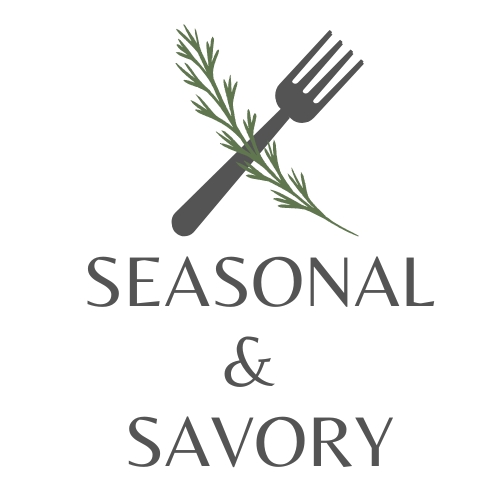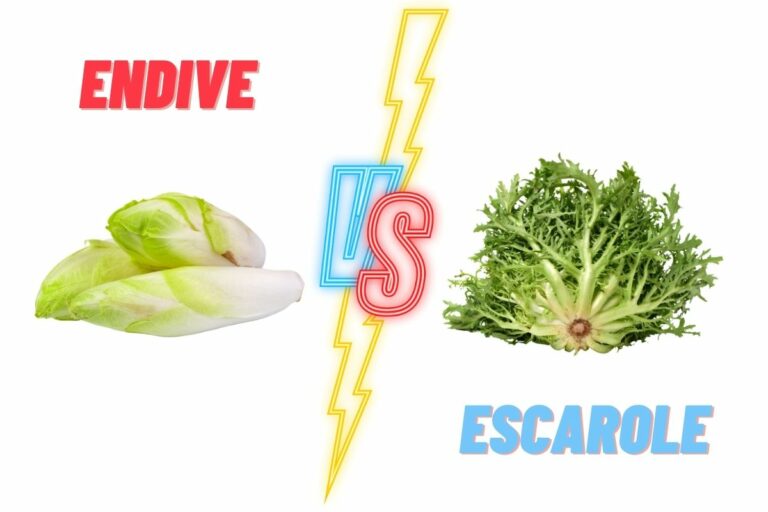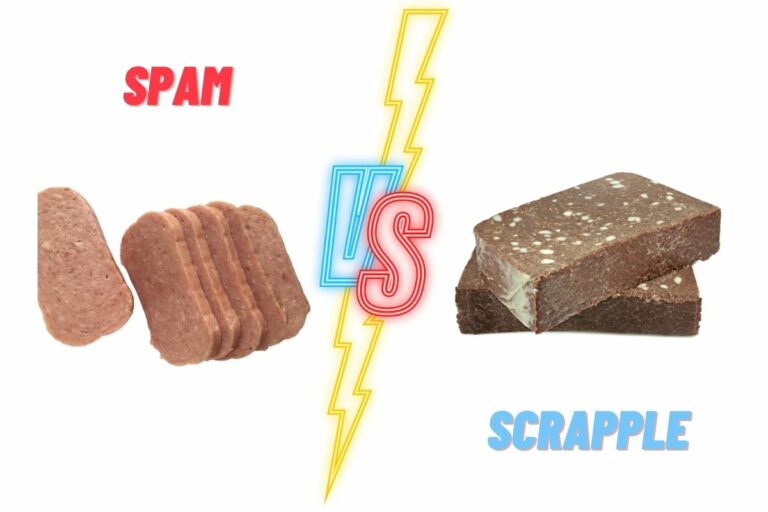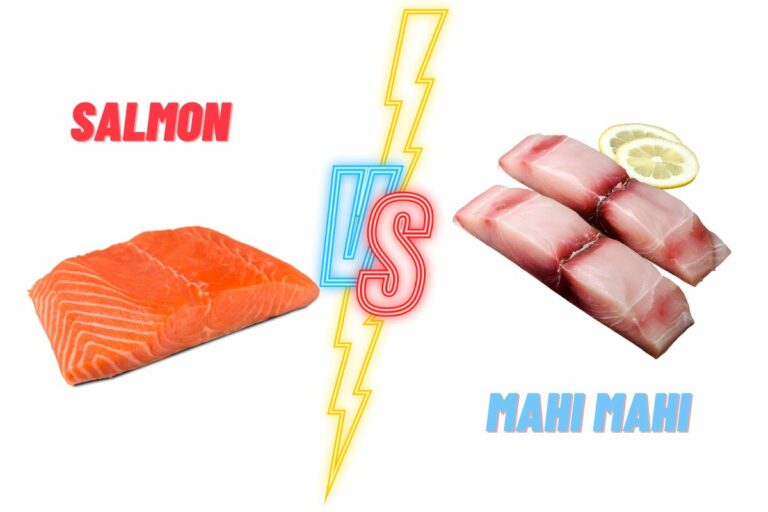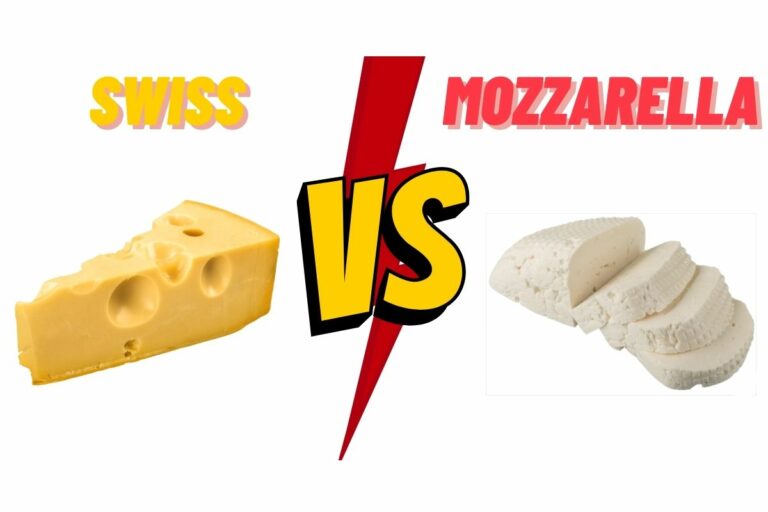Daikon vs Parsnip
Whether you’re a foodie or a chef, you’ve probably heard of two root vegetables that are frequently contrasted with each other: daikon and parsnip. These veggies may be found in many kitchens because of their distinct flavour and versatility.
But the question is, what is the difference between daikon and parsnip?
Daikon and Parsnip are both root vegetables but differ in their appearance, taste, and usage. Daikon, also known as Japanese radish, has a white, elongated shape with a mild flavour, while Parsnip has a similar shape, but it has a sweet, nutty taste and a beige colour.
Read this article to know more about the differences between Daikon and Parsnip, their nutritional values, key differences, culinary uses, health benefits as well as the alternatives of these vegetables.
Daikon vs Parsnip: At a Glace
In short, Daikon is a white root vegetable that is long and thin and has a moderate flavour. Parsnip, on the other hand, is a beige root vegetable that is sweet and nutty.
In contrast to the more prevalent usage of parsnip in European and North American cooking, Daikon is a staple in Asian cooking.
Daikon is nutritionally inferior to Parsnip due to its lower levels of fibre and several essential vitamins and minerals, as well as its lower calorie and carbohydrate content. Salads, stews, and stir-fries are just some of the many uses for these veggies.
Now let’s see the main difference between Daikon and Parsnip in the table below:
| Factor | Daikon | Parsnip |
| Taste | Mild and Sweet | Sweet and Nutty |
| Popular in | Asia | Europe and North America |
| Common use | Salad and Pickles | Roasted meals and stews |
| Enriched in | Vitamin C | Vitamin K |
| Shape | Long and Narrow | Conical in shape |
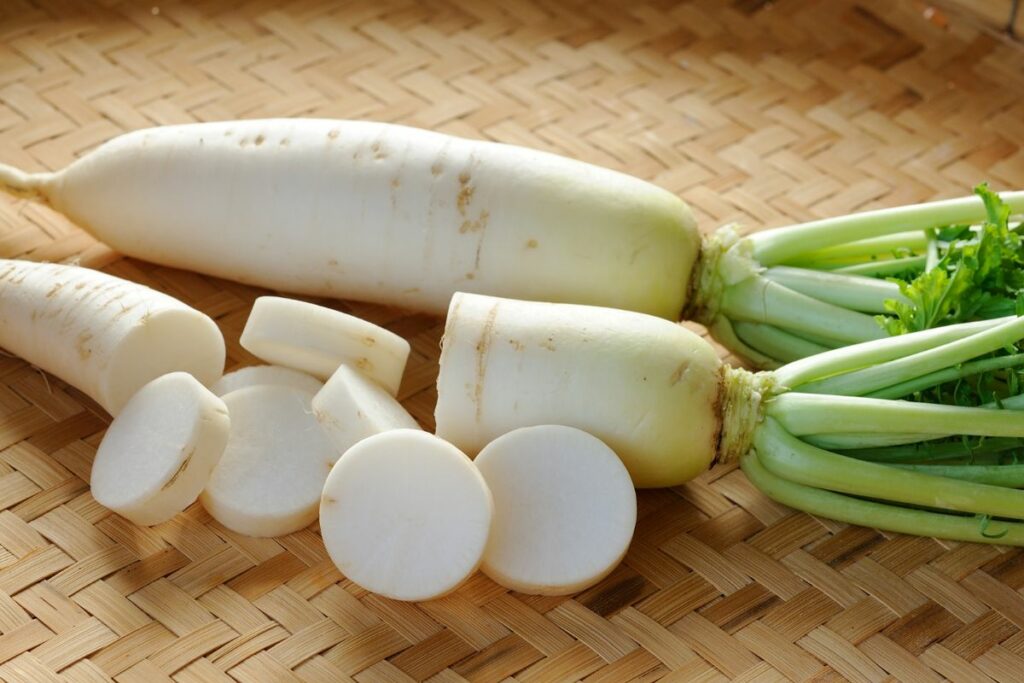
Key Differences Between Daikon and Parsnip
As per the nutritional differences of these two root vegetables there are some differences. Some important distinctions between Daikon and Parsnip are as follows:
Appearance
Daikon is a white root vegetable that is long and narrow at one end, whereas parsnips are a lighter hue and more conical in shape.
Taste
Daikon is mild and somewhat sweet, whereas parsnip is sweet and nutty, and both are crisp and refreshing to eat.
Culinary Uses
Daikon is frequently used in salads, pickles, and soups in Asia. In both European and North American cooking, parsnips are a staple ingredient, appearing frequently in stews, roasts, and purees.
Nutrition
Although they share a low-fat and calorie profile, parsnips have more fibre, potassium, and folate while daikon has more vitamin C.
Growing Conditions
Cool-season crops like daikon and cold-hardy vegetables like parsnip both thrive in temperatures between 50 and 75 degrees Fahrenheit.
Availability
While parsnips may be found in most shops, daikon is more commonly found in Asian supermarkets and speciality stores.
Daikon and parsnip are both root vegetables, and while they do have certain things in common, they are also very different in many ways.
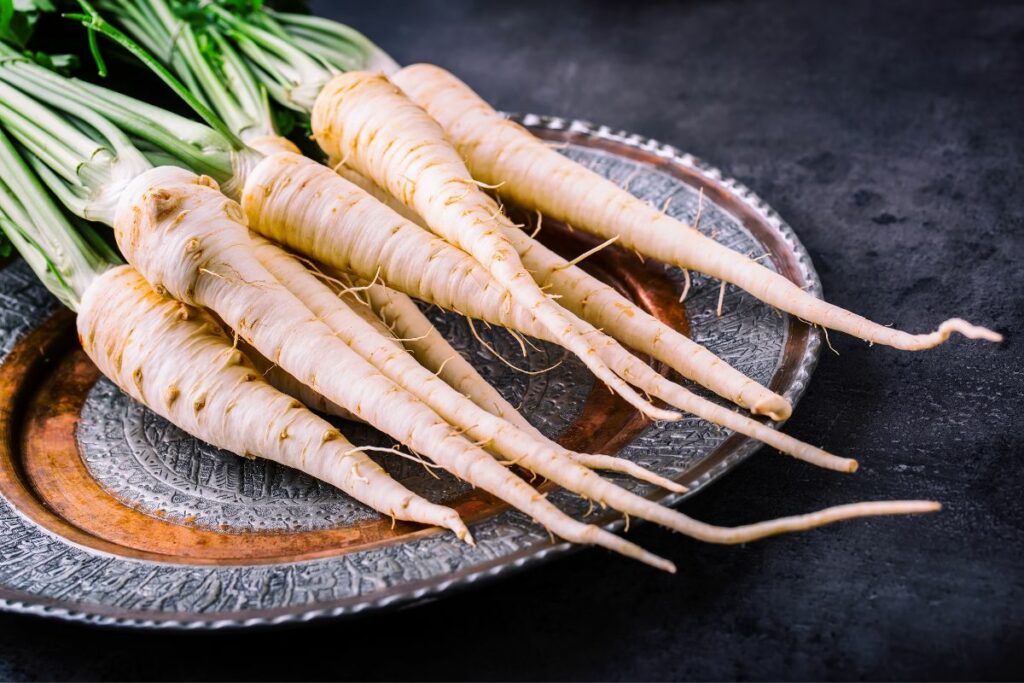
Culinary Uses of Daikon vs Parsnip
You might be wondering, “what are the culinary uses of Daikon and Parsnip?”. To understand the culinary uses of these root vegetables, let’s dive deep into this matter.
Daikon
The daikon radish is widely used in the cooking of many Asian countries, including Japan, Korea, and China. It is commonly used in salads and pickles due to its mild, somewhat sweet flavour and crisp texture.
Daikon is commonly used as a palate cleanser in Japan and is served grated alongside sashimi or sushi. It may be added to hot pots and soups, used as a dumpling filler, or stir-fried with other vegetables.
Parsnip
Instead, parsnips are commonly found in stews, roasted meats, and purees in Europe and North America. It goes well with meats and other root vegetables because of its sweet, nutty taste.
Roasting parsnips, which bring out their inherent sweetness and caramelize the edges, is a popular method of preparation. A rich and creamy puree may be made by boiling parsnips and then mashing them with butter and milk.
Furthermore, parsnips can be cooked to a crisp and used as a substitute for potato chips or fries.
Daikon and parsnip are both versatile vegetables that may be used in a wide range of meals, from starters and sides to mains and even desserts. They have little calories and no fat, while also providing a wealth of beneficial vitamins, minerals, and fibre.
Different Varieties
These two root vegetables also have some distinctive varieties. Some of the distinct types of parsnip and daikon are:
Different Varieties of Daikon
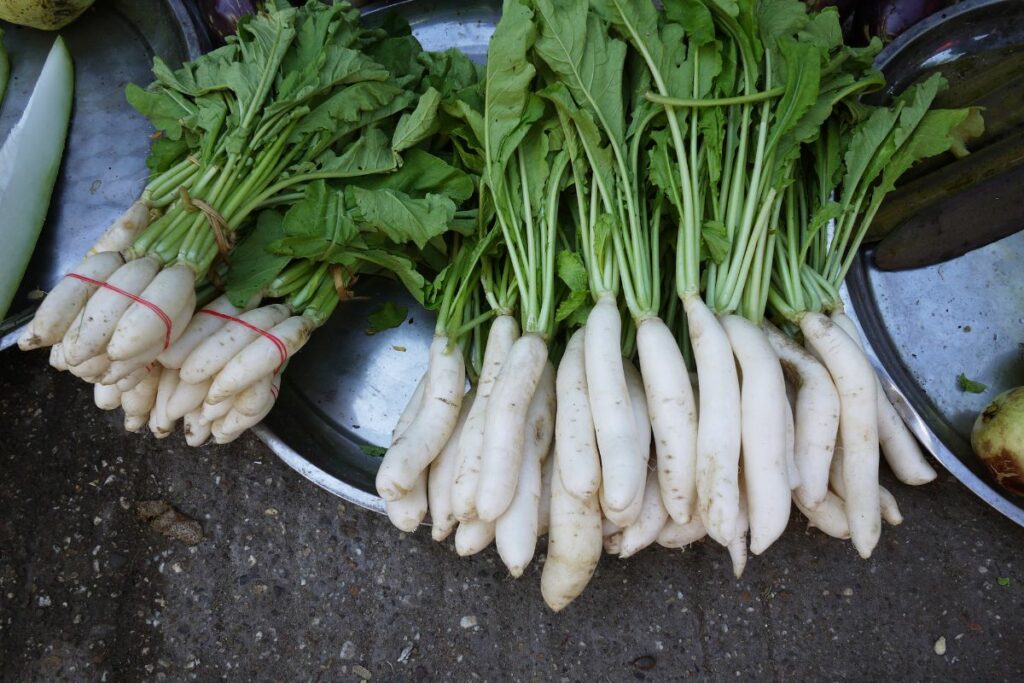
Three varieties of Daikon are:
- Japanese Daikon “This is the most common type of Daikon, which is widely used in Japanese cuisine. It is cylindrical in shape, has white skin, and is crispy and delicious.
- Korean Mu: This is a shorter, thicker form of daikon that is sweeter tasting than Japanese daikon and has a light greenish-white tint. It is frequently used in Korean foods like kimchi.
- Chinese White Radish: This is a larger and more elongated type of Daikon, with thicker skin and a milder taste than Japanese Daikon. It is frequently used in stews, soups, and stir-fries.
Different Varieties of Parsnip
The four varieties of parsnip are
- All-Americans: This is the most popular type of Parsnip, with a soft, beige skin and a sugary, nutty flavour.
- Guernsey: This kind has cream-coloured skin and a slightly milder flavour than All-American, and it is longer and narrower in shape.
- Hollow Crown: This type has a recognizable hollow centre that makes peeling and preparing it simpler. It is frequently used in soups and stews and has a sweet, soft flesh.
- Gladiator: This is a more recent kind of parsnip, and it is more uniform in size and shape. It is renowned for its soft texture, sweet, and nutty flavour.
These several types of daikon and parsnip are excellent choices for a range of recipes because each one has a distinctive flavour, texture, and culinary applications.
Nutrition and Health Benefits of Daikon and Parsnip
Both Daikon and Parsnip have many health benefits. To understand these health benefits it is important to have a deeper knowledge about their nutritional values as well:
Nutritions of Daikon and Parsnip
Both vegetables are low in calories and fat, making them a great choice for those looking to maintain a healthy weight.
Daikon is particularly rich in vitamin C, an essential nutrient that plays a crucial role in supporting the immune system and promoting skin health.
It is also a good source of potassium, which can help regulate blood pressure and support heart health, and phosphorus, which is important for strong bones and teeth. Additionally, daikon is high in fiber, which can help maintain healthy cholesterol levels and support digestive health.
Parsnip, on the other hand, is particularly rich in vitamin K, a nutrient that is essential for healthy blood clotting and bone density.
It is also a good source of potassium, which can help regulate blood pressure, and folate, an important nutrient for pregnant women that can help prevent birth defects. Like daikon, parsnip is high in fiber, which can help regulate blood sugar levels and support digestive health.
Both daikon and parsnip are also low in sugar, which can make them a good choice for those with blood sugar concerns. They are also versatile vegetables that can be used in a variety of dishes, from soups and stews to roasted or mashed as a side dish.
Here’s a nutrition table comparing the nutritional facts between Daikon and Parsnip at a glance according to Foodstruct:
| Nutrient | Daikon | Parsnip |
| Protein | 0.6g | 1.2g |
| Fats | 0.1g | 0.3g |
| Carbohydrate | 4.1g | 17.99g |
| Vitamin K | 0.3ug | 22.5ug |
| Zinc | 0.59mg | 0.15mg |
| Phosphorus | 23mg | 71mg |
| Sugar | 2.5g | 4.8g |
| Potassium | 227mg | 375mg |
| Fiber | 1.6g | 4.9g |
Daikon and Parsnip’s Health Advantages
Daikon and parsnip are both nutrient-dense vegetables that offer a range of health advantages. Here are some of the benefits of including these root vegetables in your diet:
Daikon:
- Promotes digestion: Daikon is a rich source of fibre, which can help regulate bowel movements and promote healthy digestion. It also contains enzymes that can aid in the digestion of fats and proteins.
- Supports immune system: Daikon is a good source of vitamin C, an essential nutrient that plays a crucial role in supporting the immune system and protecting against disease.
- Reduces inflammation: Daikon contains antioxidants that can help reduce inflammation in the body, which can help prevent chronic diseases like heart disease and cancer.
- Supports bone health: Daikon is a good source of calcium, potassium, and phosphorus, all of which are essential nutrients for maintaining healthy bones.
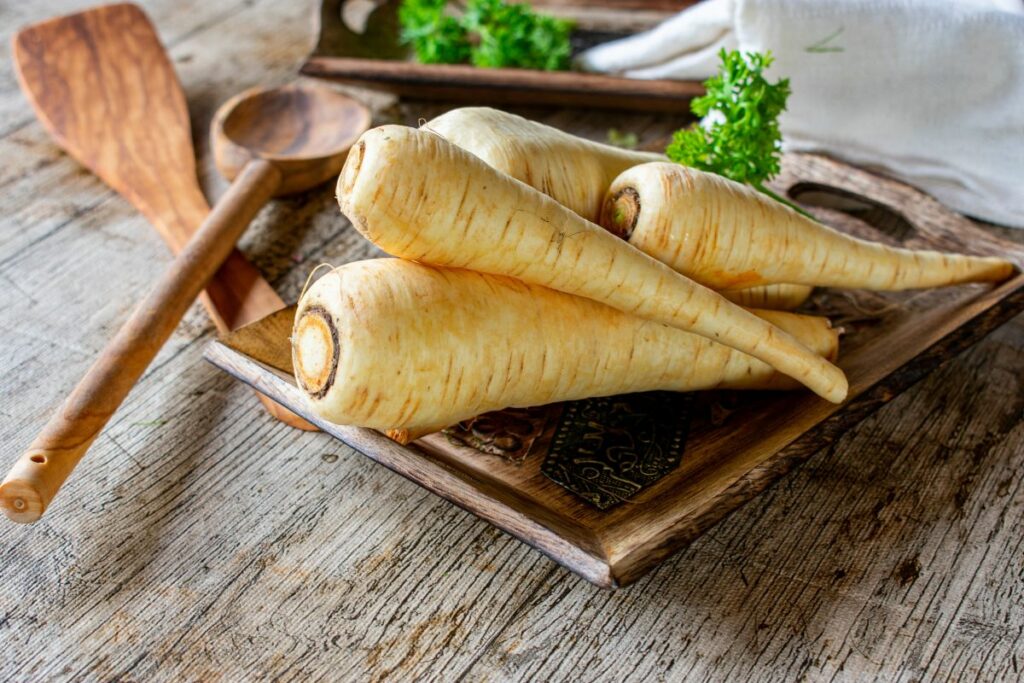
Parsnip:
- Supports heart health: Parsnip is a good source of potassium, which can help regulate blood pressure and reduce the risk of heart disease. It is also low in fat and calories, making it a heart-healthy food.
- Aids in digestion: Parsnip is high in fibre, which can help regulate bowel movements and prevent constipation. It can also help lower cholesterol levels, which can reduce the risk of heart disease.
- Supports healthy blood sugar levels: Parsnip is a low-glycemic-index food, which means it releases sugar into the bloodstream slowly and can help regulate blood sugar levels.
- Promotes healthy skin: Parsnip is a good source of vitamin C, an essential nutrient that is important for healthy skin. Vitamin C plays a crucial role in the production of collagen, which helps keep skin looking young and radiant.
Overall, including daikon and parsnip in your diet can provide a range of health benefits, including promoting digestion, supporting heart health, and reducing inflammation.
They are also low in calories and fat, making them a great choice for those looking to maintain a healthy weight.
Alternatives to Daikon and Parsnip
There are other root vegetables that are suitable to replace both Daikon and Parsnip. Some of them are
Turnips
Turnips and daikon are often interchangeable because of their comparable texture and versatility. They are commonly used in dishes like stews, roasts, and soups because of their somewhat sweet and earthy flavour.
Carrots
Carrots are well-liked vegetables that may be consumed either raw or cooked. They have a similar texture to parsnips but are ever-so-slightly sweeter. Carrots are versatile and may be shredded and used as a salad topping or added to a soup, stew, or roast.
Jicama
Jicama, a kind of root vegetable, has a consistency, not unlike that of daikon. It is commonly used in salads, slaws, and stir-fries because of its somewhat sweet and nutty flavour.
Celery root
Also known by its Latin name, celeriac, celery root is a root vegetable with a consistency like that of parsnips. It tastes faintly like celery but isn’t overpoweringly so.
Soups, stews, and purees, as well as shredded celery root added to salads, are all great ways to utilize this versatile vegetable.
Sweet potatoes
Like parsnips, sweet potatoes are starchy root vegetables, but they have a little sweeter flavour. They go great with roasted dishes, mashed potatoes, stews, and soups. The minerals vitamin A and fibre may be found in abundance in them.
How to Store Daikon and Parsnip
The same storage conditions can keep root veggies like daikon and parsnip fresh for weeks. The best way to keep them is as described below.
Daikon:
- You may keep whole, unpeeled daikon in the fridge for up to a week if you place it in a plastic bag or a moist paper towel. You have up to two weeks to consume it.
- Daikon may be preserved in the fridge for up to four days after being peeled and sliced if kept in an airtight container.
- Daikon can be stored for up to six months in the freezer. Slice or cube it, then blanch it in boiling water for two minutes before putting it in the freezer.
Parsnip:
- Parsnips should be kept in a root cellar or cold pantry until ready to use. You have up to three weeks to consume them.
- Parsnips, after being peeled and sliced, can be kept for up to four days in the refrigerator in an airtight container.
- Parsnips have a similar storage life as carrots in the freezer, at around six months. Prepare them for freezing by slicing or cubing them and then blanching them in hot water for two minutes.
The ethylene gas released by apples and bananas, for example, might hasten the spoilage of daikon and parsnip if they are kept together.
FAQs
How do you cook with daikon and parsnip?
Raw daikon, pickled daikon, and cooked daikon are all viable options. Soups, stews, stir-fries, and salads all benefit from its inclusion.
As a vegetable, parsnips are most often roasted, mashed, or blended into sauces and gravies. In some cases, it can even be substituted for potatoes.
Are daikon and parsnip interchangeable in recipes?
Because of their distinct tastes and textures, daikon and parsnip may not be interchangeable. Although parsnip is more commonly used in stir-fries and salads, daikon can be a suitable substitute.
Are daikon and parsnip easy to find?
You can get daikon and parsnip at most supermarkets and gourmet food stores. It’s possible that daikon is more widely accessible in Asian shops and that parsnip is more frequent in Western retailers.
These two vegetables have similar seasons, peaking in the cooler months of the year.
Can I eat raw daikon and parsnip?
Daikon is a raw vegetable that is commonly used in salads and as a garnish when grated or sliced. Raw parsnip has a rough, woody texture and an unpleasant flavour, therefore most people avoid it.
But, after a quick blanching or roasting, it can be sliced thinly and used as a salad addition.
Conclusion
Daikon and parsnip are both nutritious root vegetables that offer a range of essential vitamins and minerals. They are low in calories and fat, making them a great choice for those looking to maintain a healthy weight.
While the flavor and texture of daikon and parsnip are distinct from one another, both are excellent choices for anyone looking to add some extra nutrition and deliciousness to their meals.
